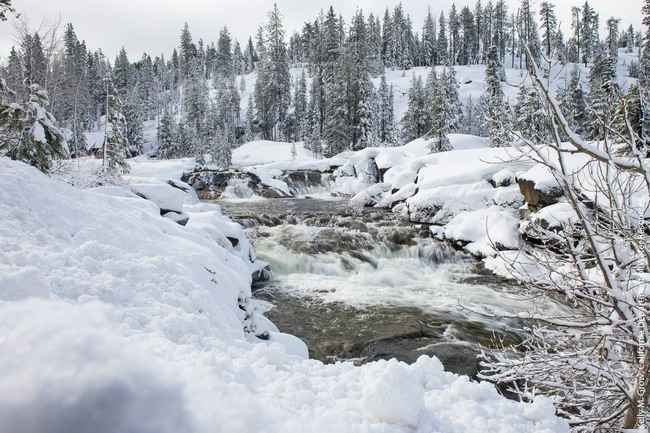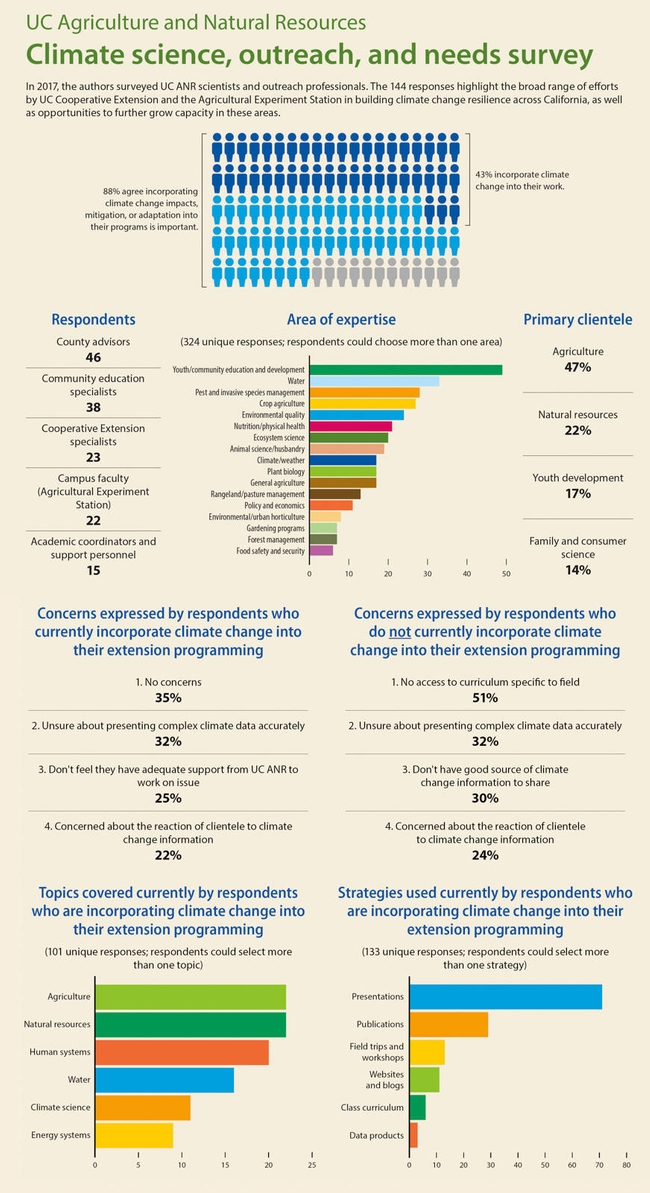Building climate change into the work of UCANR
UC Cooperative Extension researchers convey need for more climate change communication and curriculum tools
Reducing greenhouse gas emissions from natural and working lands is one of California's key climate change strategies. In particular, the potential for farm and rangeland soils to serve as carbon sinks has been getting a lot of attention lately in the national media — and during California Healthy Soils week, which wrapped up Dec. 7.
These are areas where UC Cooperative Extension, with its local presence across the state, is well-positioned to drive change. But as a recent survey of UCCE advisors, specialists and faculty found, while there is a good deal of climate work happening, there are also some significant obstacles.
The survey results — reported in an article by UCCE academics Ted Grantham, Faith Kearns, Susie Kocher, Leslie Roche and Tapan Pathak in the latest issue of California Agriculture — showed that while nearly 90 percent of respondents believe it is important to incorporate climate science into extension programming, only 43 percent currently do so.
Respondents pointed to a number of issues. One was "limited familiarity with climate science fundamentals." It's one thing to cite the overwhelming scientific consensus that climate change is real and is being driven largely by human activity; it is another to be able to respond quickly and convincingly to detailed questions from doubters. This list from Grist, for instance, details more than 100 common arguments raised by climate skeptics, many of which have non-trivially complex answers.
Another important issue cited by respondents was "fear of alienating clientele by talking about a contentious topic," a response that highlights the importance of personal relationships in UCCE's work, and the challenge of communicating an area of science that is highly politicized.
The authors conclude: "To further increase the capacity of UC ANR staff to support the needs of their clientele and the broader public, professional development around climate science fundamentals, communication, and adaptation strategies is critical." As an initial follow-up, the UCANR climate change program team (led by authors Grantham, Kocher and Pathak) is presenting a workshop and professional development meeting for extension professionals in February.
For more from California Agriculture, the research journal of UCANR, see the full issue with articles on mapping soil salinity in the San Joaquin Valley via satellite; choosing forage seed mixes for rangeland restoration; growing oilseeds in winter without irrigation; keeping dairy cows cool in the summer; breeding better carrots; and more.


